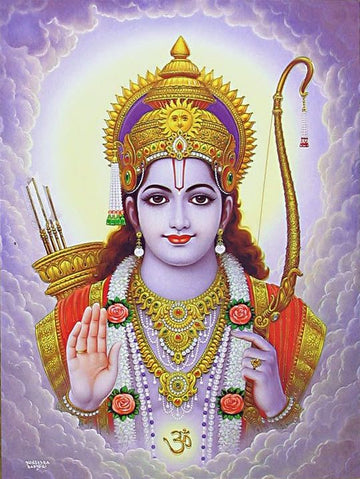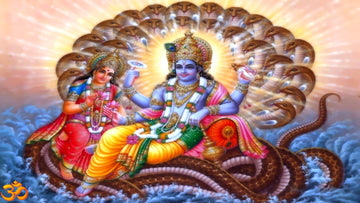
|| सबके अपने राम ||
Life Lessons from Ramayana & Shree Ram
Ramayana is an epic that has been passed down through generations in India and is considered one of the greatest epics in the world. It is believed to have been written by the sage Valmiki in Sanskrit and is considered a spiritual and moral guide to life. The epic tells the story of Lord Rama, his wife Sita, and their battles against the demon king Ravana. The story is full of life lessons and teaches us how to live a life of righteousness, devotion, and humility. In this blog, we will explore some of the learnings from Ramayana that can be applied in our daily lives.
- The Importance of Dharma:
Dharma is a fundamental concept in Hinduism, and it refers to the moral and ethical principles that govern our lives. In Ramayana, Lord Rama is the embodiment of Dharma. He is shown as a prince who upholds his duties and responsibilities, even at great personal cost. When his father, King Dasharatha, asks him to go into exile for 14 years, Rama willingly obeys his father's command, even though he is the rightful heir to the throne. This shows us the importance of fulfilling our responsibilities and doing what is right, even if it is difficult.
- The Importance of Relationships:
Ramayana teaches us the importance of relationships and how they shape our lives. The relationship between Rama and Sita is one of the most revered in Indian mythology. Their love and devotion for each other are considered the epitome of love and sacrifice. Rama is shown as the ideal husband who will do anything to protect his wife, and Sita is shown as the ideal wife who will stand by her husband through thick and thin. Their relationship teaches us the importance of mutual respect, love, and devotion in any relationship.
- The Importance of Humility:
In Ramayana, Lord Rama is shown as a humble and compassionate leader who treats everyone with respect and kindness. He never flaunts his power or position, and is always ready to help those in need. His humility is seen in the way he interacts with his subjects and even with his enemies. He is respectful towards his guru, Vasishtha.
- The Importance of Duty:
One of the central themes of the Ramayana is the importance of duty. Lord Rama is an epitome of duty, and his unwavering commitment to his duties is what makes him a revered figure. He gives up his rightful claim to the throne and voluntarily goes into exile to uphold his father's promise to his stepmother. Similarly, Sita fulfills her duties as a wife and queen with unwavering devotion and loyalty. The lesson here is that duty should always come before personal desires or ambitions. When we do our duty sincerely and selflessly, it not only brings us peace and satisfaction but also inspires others to do the same.
- The Power of Love:
The love between Lord Rama and Sita is one of the most celebrated love stories in Indian mythology. Their love is not just romantic but also a symbol of devotion, respect, and trust. Sita's unwavering love and loyalty towards Rama and Rama's unwavering devotion towards Sita are the hallmark of their relationship. Love, when it is pure and selfless, has the power to conquer all obstacles and adversities. It is not just limited to romantic love but also extends to familial love, love for one's country, and love for all humanity.
- The Power of Forgiveness:
The Ramayana teaches us the power of forgiveness. When Sita is kidnapped by Ravana, Rama forgives his brother Lakshmana for leaving Sita alone and goes to rescue her. Similarly, when Ravana is killed, Rama forgives him for his misdeeds and performs his last rites with respect and honor. Forgiveness is not a sign of weakness but a sign of strength. It allows us to let go of our anger and resentment and move on with our lives. When we forgive others, we not only free ourselves from negative emotions but also create a positive environment around us.
- The Importance of Respect:
Respect is a fundamental value in Indian culture, and the Ramayana reinforces this value. Lord Rama always shows respect to his elders, teachers, and even his enemies. He treats everyone with dignity and compassion, regardless of their social status or background. Similarly, Sita is respected as a queen, a wife, and a mother. The lesson here is that respect should be an integral part of our lives. When we show respect to others, we create an atmosphere of trust and harmony.
- The Consequences of Greed
The Ramayana also teaches us about the consequences of greed and selfishness. Ravana, the demon king who kidnaps Sita, is a greedy and selfish ruler who is willing to do anything to get what he wants. His desire for power and wealth ultimately leads to his downfall, and his actions have a devastating impact on the people around him.
- The Importance of Loyalty
The Ramayana also teaches us the importance of loyalty. Lord Rama's army is made up of loyal friends and allies who are willing to fight and even die for him. Hanuman, a one of our Gods, is one of Lord Rama's most loyal allies, and he plays a crucial role in helping Lord Rama rescue Sita from Ravana.This lesson reminds us of the value of true friendship and the importance of staying loyal to our friends and loved ones, even in difficult times.
Similarly, the character of Kaikeyi, Rama's stepmother, is shown to be driven by greed and jealousy. She convinces her husband, King Dasharatha, to exile Rama and make her own son the heir to the throne, all in the name of her own ambition. Her actions have far-reaching consequences and ultimately lead to the death of Dasharatha and the exile of Rama.
The Ramayana warns us of the dangers of greed and selfishness and shows us that these qualities can have serious consequences not just for ourselves but for the people around us as well.
The Ramayana also highlights the importance of self-control. Lord Rama is a symbol of self-control, as he maintains his composure and stays focused on his duty even in the face of difficult challenges and temptations.
One of the most famous incidents in the Ramayana is the story of the golden deer. Ravana, in order to lure Lord Rama away from Sita, sends a beautiful golden deer into the forest. Lord Rama becomes enchanted by the deer's beauty and goes after it, leaving Sita alone and vulnerable to Ravana's attack.
This incident illustrates the importance of self-control and the dangers of giving in to our desires and impulses. Lord Rama's failure to control his desire for the golden deer leads to Sita's abduction and the start of a long and difficult battle against Ravana.
In addition to the episode of the golden deer, the Ramayana also portrays Lord Rama as a symbol of self-control in his interactions with others. He is always calm and composed, even in the face of provocation, and he maintains his focus on his duties and responsibilities.
The lesson here is that self-control is essential for leading a fulfilling and meaningful life. By controlling our desires and impulses, we can avoid making impulsive decisions that may have negative consequences. It also helps us to stay focused on our goals and responsibilities, which can lead to greater success and happiness. Moreover, the Ramayana teaches us that self-control is not just about controlling our own desires and impulses, but also about how we interact with others. By remaining calm and composed in difficult situations, we can avoid conflict and build stronger, more positive relationships with others.
The Ramayana contains many valuable life lessons that are still relevant today. The importance of following dharma, the power of devotion, the consequences of ego, the importance of loyalty, the power of forgiveness, and the importance of self-control.
Lord Rama, is also revered as Maryada Purushottam, which translates to "the best among men who abides by the rules of virtue." This title is given to Lord Rama because he is considered the epitome of righteousness, and he always followed the principles of dharma (righteousness).
Throughout the Ramayana, Lord Rama is depicted as a model of ethical conduct and moral virtue. He embodies all the qualities of a righteous leader, including compassion, honesty, integrity, and selflessness. His actions are always guided by a sense of duty and responsibility towards his people and his family.
In addition to his moral excellence, Lord Rama is also known for his unwavering commitment to upholding societal norms and moral codes. He is a staunch believer in the importance of following the rules of conduct and maintaining discipline in one's personal and public life.
The term "Maryada Purushottam" emphasizes Lord Rama's adherence to these principles, even in the face of great adversity. His commitment to dharma and his willingness to sacrifice his own personal desires and needs for the greater good make him a symbol of ethical leadership and moral uprightness.
Lord Rama's exemplary character and his unwavering dedication to righteousness and moral conduct serves as an inspiration to all those who strive to live a life guided by ethical principles and moral values.


